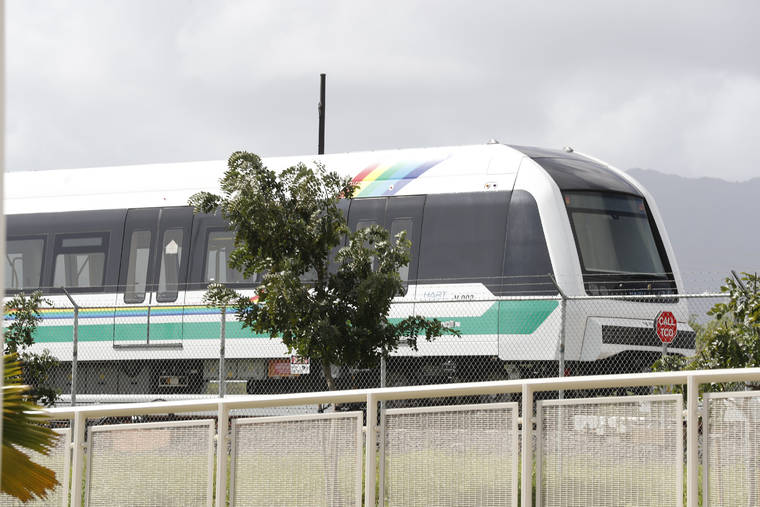The Honolulu rail authority is seeking approval for a $9.19 million change order for the company AECOM, a design and engineering firm with a rail contract that has been repeatedly extended, revised and increased in value in a convoluted series of changes during the past eight years.
AECOM’s original contract in 2012 was to plan and design the 4-mile segment of the elevated rail line through downtown
Honolulu, and also develop plans to relocate the utilities in the path of that section of rail. The city then planned to hire a separate contractor to handle the construction work for that segment.
But within a few years that plan had changed, and the Honolulu Authority for Rapid Transportation decided to issue a solicitation in 2015 for what is known as a design-build contract, meaning a new company would be hired to both design and build that same segment of rail line. The utility relocation work was supposed to be included.
Two years later HART canceled that design-build solicitation after two of the potential bidders for the contract withdrew. The rail project was also running out of money at the time, and the state was forced to approve a $2.4 billion bailout of the project later that year.
HART then began pursuing yet another plan that involved splitting the utility relocation and roadway work in the city center off from construction of the
elevated guideway. Nan Inc. won the contract for up to $400 million to do that utility relocation construction, with AECOM responsible for the design.
Construction of that city center utility relocation piece of the rail project was only about 3% complete at the beginning of March.
During those years of twists and turns, there were 20 amendments to the original AECOM contract, and change orders or amendments increased the company’s original $43.9 million contract to nearly $58.5 million. The latest proposed change order would push up the total to nearly
$67.7 million, according to figures provided by HART.
That history bothered some members of HART’s Project Oversight Committee, which was briefed on the proposed change order Thursday.
“It doesn’t make us all collectively look very good,” said Wes Frysztacki, a HART board member and director of the city Department of Transportation
Services. “It looks like we’ve had a lot of false starts and change of direction, and I know it explains how we got to where we are, but it doesn’t look very good.”
Frank Kosich, director of engineering and design for HART, said that the complex and drawn-out design process had value because it helped to save on construction costs as AECOM and others helped to develop strategies that allowed HART to avoid relocating hundreds of feet of utilities.
“So while we incurred some design costs associated with revisions of designs … we believe we’ve, in deletion of scope (of construction work), we’ve saved a substantial amount of money in construction,” he said.
HART instructed AECOM to suspend work at least twice, Kosich said, which helps to explain why a 2012 contract that was supposed to be finished in two years is now proposed for an extension until 2023.
Andrew Robbins, executive director of HART, said AECOM did “much more” than 30% of the design work on the city center guideway before being pulled off that portion of the project, but said that work was not wasted.
HART has used those
AECOM city center guideway design drawings as part of the latest plan to solicit a new contractor under a public-private partnership, or P3, to develop the city center guideway and stations. The winning P3 bidder essentially will have a design-build contract to develop the city center
section of rail.
“That design work that AECOM accomplished is not just sitting on a shelf somewhere,” Robbins said. “It is available to all the (P3) bidders.”
HART will seek final approval of the AECOM change order from the full rail authority board, which is scheduled to meet on June 25.

